Annual Report 2022
Back to business
In an era marked by conservation challenges, the Mohamed bin Zayed Species Conservation Fund exemplifies how targeted support can ignite substantial change. Our small grants empower conservationists to innovate, engage communities, and protect biodiversity. These efforts are not just financial aids but catalysts for resilience against habitat loss, climate change, and more, demonstrating the profound impact of strategic, grassroots action.
Foreword
In an era marked by conservation challenges, the Mohamed bin Zayed Species Conservation Fund exemplifies how targeted support can ignite substantial change. Our small grants empower conservationists to innovate, engage communities, and protect biodiversity. These efforts are not just financial aids but catalysts for resilience against habitat loss, climate change, and more, demonstrating the profound impact of strategic, grassroots action.
As an added endorsement of our commitment to integrating climate and nature conservation, I was honored to be appointed as the UN Climate Change High-Level Champion for COP28. This role underscores the intrinsic link between climate action and the preservation of biodiversity, highlighting the mutual benefits of addressing these global challenges in tandem.
I am deeply honored to carry the responsibility of supporting the COP28 UAE Presidency in this capacity. The environment, with its climate and biodiversity, is a cornerstone of the UAE’s culture and identity, recognized as essential for well-being. In my dual roles as UN Climate Change High-Level Champion for COP28 and IUCN President, I am committed to pushing beyond conventional approaches to prioritize nature-based solutions that can harmonize climate and biodiversity objectives.
The interconnectedness of climate change and biodiversity is undeniable. With the support of over 10,000 conservationists, biologists, ecologists, field workers, and volunteers on the ground, the MBZ Fund is uniquely positioned to lead conservation efforts. Our approach demonstrates that through focused, strategic actions, even small-scale funding can yield significant contributions to the global conservation effort.
Razan Al Mubarak
Managing Director
About Us
The Mohamed bin Zayed Species Conservation Fund seeks to empower species conservation efforts and programmes globally, embodying the deep-rooted commitment of both the government and the people of Abu Dhabi to preserve our natural heritage.
Why species conservation?
Animals, fungi, and plants are essential components to sustain a prosperous ecosystem. Conserving a well-balanced ecosystem maintains the health of the environment ensuring humans have access to clean air and water, fertile land, and plants with medicinal properties. When a species becomes endangered, it disrupts the ecosystem and can have devastating, often far-reaching consequences for the well-being of all inhabitants on our beautiful planet.
In a recent UN report, it was highlighted that around 1 million animal and plant species are now threatened with extinction, many within decades, more than ever before in human history.
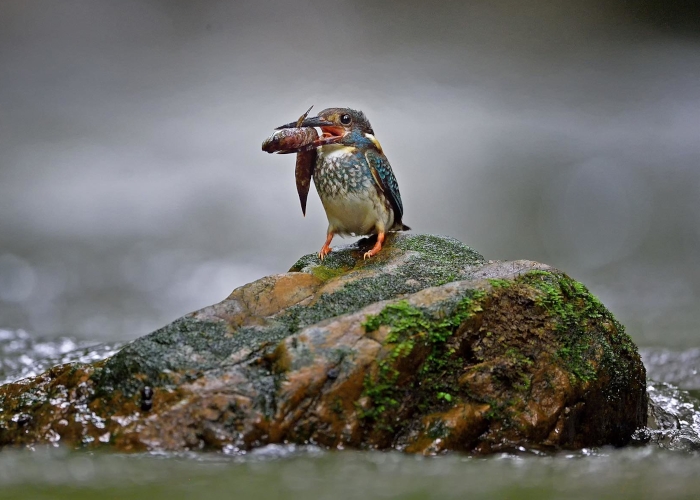
Kingfisher © WCS
The average abundance of native species in most major land-based habitats has fallen by at least 20%, mostly since 1900. More than 40% of amphibian species, almost 33% of reef-forming corals and more than a third of all marine mammals are threatened.
The picture is less clear for insect species, but available evidence supports a tentative estimate of 10% being threatened. At least 680 vertebrate species had been driven to extinction since the 16th century and more than 9% of all domesticated breeds of mammals used for food and agriculture had become extinct by 2016, with at least 1,000 more breeds still threatened.
It’s time to rethink our relationship with nature. Not for us, but for our children and their children. Let’s leave the world a better place.
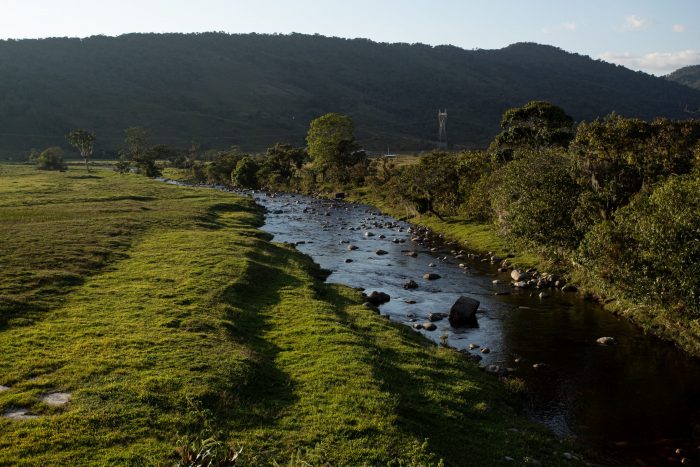
Small Grants
The Mohamed bin Zayed Species Conservation Fund provides financial support in the form of small grants of less than $25,000 to conservation projects worldwide. These small grants are as much for the species as they are for the conservationists and organizations working so passionately to protect them.
Small Grants
Case Studies
Thousands of these small-scale species conservation projects have reached all corners of the globe, across all seven continents, offering targeted support to enthusiastic conservationists and researchers in the field.
These intrepid individuals and organisations are the first line of defense against species extinction – passionate people who have dedicated their lives to the conservation of the creatures and plants they love, and we depend on to retain our planet’s unique biodiversity.
Vultures to track animal poisoning in Africa
The Great Limpopo Transfrontier Park (GLTP) including the Limpopo National Park (Mozambique), Gonarezhou National Park (Zimbabwe) and Kruger National Park (KNP) represent a strategically important, vulture-rich landscape. The 35 square kilometer wilderness represents one of the most significant protected areas on the African continent. Wildlife poisoning is a massive threat and unfortunately, vultures are impacted more than any other species. An estimated 450 vultures of four threatened species have been poisoned in the KNP since January 2019. The aim of this ambitious project was to eliminate animal poisoning by using the vultures as first responders. By tracking the vultures, they will also be able to monitor their movements and unique foraging and feeding signatures as well as share alerts with rangers about large mammal deaths possibly through poisoning. The MBZ Fund grant made the project possible and massively successful as they managed to deploy 66 GPS-tracked vultures and obtained 97% coverage of the targeted area. They developed an effective, automated system to push culture feeding and immobility alerts, enabling them to ground truth over 350 feeding event alerts of which 89% were positive carcass hits. These alerts are also shared with wildlife monitoring...Read More
Small Grants
Small grants supported 2022
IUCN Red List classifications
Species Types
| Type | IUCN | Vernacular Name | Scientific Name | Name | Name of Organization | Country, Continent | Funding |
|---|---|---|---|---|---|---|---|
| Reptile | CR | Yangtze giant softshell turtle | Rafetus swinhoei | Long Nguyen | Wildlife Conservation Society | Vietnam, Asia | $25,000 |
| Mammal | CR | Addax | Addax nasomaculatus | Torsten Bohm | Noé | Niger, Africa | $24,868 |
| Plant | NE | Lukea quentinii | Lukea quentinii | Yvette Harvey-Brown | Botanic Gardens Conservation International | Tanzania, Africa | $5,000 |
| Plant | NE | Croton borbensis | Croton borbensis | Amanda da Paixão Noronha Pereira | N/A | Brazil, South America | $3,050 |
| Plant | EN | Mouterde's knapweed | Centaurea mouterdei | Hicham El Zein | Tariq el Nahl | Lebanon, Asia | $4,960 |
| Invertebrate | NE | White tomiris butterfly | Euchloe tomyris | Abdulaziz Davlatov | Institute of Zoology and Parasitology, National Academy of sciences of Tajikistan | Tajikistan, Asia | $3,000 |
| Invertebrate | NE | leaf-cutting ant | Atta robusta | Jarbas Queiroz | Federal Rural University of Rio de Janeiro | Brazil, South America | $4,926 |
| Invertebrate | VU | Madeiran Green Bush-Cricket | Psalmatophanes barretoi | Howon Rhee | IUCN SSC Grasshopper Speciallist Group | Portugal, Europe | $8,000 |
| Invertebrate | CR | Albanian Saddle Bush-cricket | Uromenus dyrrhachiacus | Michèle Lemonnier-Darcemont | GEEM | Albania, Europe | $5,000 |
| Fungi | CR | Wrightoporia araucariae | Wrightoporia araucariae | Elisandro Ricardo Drechsler dos Santos | Federal University of Santa Catarina | Brazil, South America | $20,000 |
| Plant | EN | Madeira Shrub Cornflower | Cheirolophus massonianus | Ben Nyberg | National Tropical Botanical Garden | Portugal, Europe | $9,000 |
| Plant | NE | Mascarene amaranth | Aerva congesta | Cacey Cottrill | Durrell Wildlife Conservation Trust | Mauritius, Africa | $12,000 |
| Plant | DD | Rhododendron | Rhododendron pogonophyllum | Kezang Tobgay | National Biodiversity Centre, Serbithang | Bhutan, Asia | $6,000 |
| Plant | CR | Ginger | Zingiber engganoense | Angga Yudaputra | Research Center for Plant Conservation, Botanic Gardens and Forestry | Indonesia, Asia | $7,000 |
| Plant | EN | Himalayan cypripedium | Cypripedium himalaicum | Naphel Naphel | Paro Forest Division, Paro Bhutan | Bhutan, Asia | $15,000 |
| Invertebrate | DD | Ignat's Stone Grasshopper | Acinipe ignatii | Sílvia Pina | N/A | Portugal, Europe | $5,000 |
| Invertebrate | NE | Macrosteles pygmy | Macrosteles pygmaeus | Oleg Borodin | Daugavpils University | Lithuania, Europe | $5,000 |
| Invertebrate | EN | Ryukyu rabbit tick | Haemaphysalis pentalagi | Mackenzie Kwak | Hokkaido University | Japan, Asia | $10,000 |
| Invertebrate | EN | Crotch bumblebee | Bombus crotchii | Fadia Sara Ceccarelli | CICESE | Mexico, North America | $10,000 |
| Fish | DD | Manganga | Potamobatrachus trispinosus | Lorena Vieira | N/A | Brazil, South America | $7,000 |
| Fish | EN | Manyara Tilapia | Oreochromis amphimelas | Nanyika Kingazi | Tanzania Forestry Research Institute | Tanzania, Africa | $7,500 |
| Fish | CR | Squeaker catfish | Synodontis macrophthalmus | Wonder Sekey | Kwame Nkrumah University of Science and Technology | Ghana, Africa | $7,000 |
| Reptile | EN | Mt Kenya Bush Viper | Atheris desaixi | Atubwa Howard | National Museums of Kenya | Kenya, Africa | $8,000 |
| Reptile | CR | Aeolian wall lizard | Podarcis raffonei | Benedetta Gambioli | N/A | Italy, Europe | $9,000 |
| Reptile | CR | Home's Hingeback tortoise | Kinixys homeana | Luca M. Luiselli | N/A | Liberia, Africa | $10,000 |
| Reptile | CR | Leith's softshell turtle | Nilssonia leithii | Sneha Dharwadkar | Dakshin Foundation, Bengaluru, India | India, Asia | $14,000 |
| Fish | EN | Rio Concepcion topminnow | Poeciliopsis jackschultzi | Mariana Mateos | Texas A&M University | Mexico, North America | $8,000 |
| Fish | CR | Trichogenes claviger | Trichogenes claviger | Juliana Paulo Silva | Federal University of Espirito Santo | Brazil, South America | $7,724 |
| Fish | EN | Philippine Medaka | Oryzias luzonensis | Faith Tadeo | Don Mariano Marcos Memorial State University | Philippines, Asia | $5,000 |
| Amphibian | NE | Pumpkin toadlet | Brachycephalus mirissimus | Larissa Teixeira | Mater Natura - Instituto de Estudos Ambientais | Brazil, South America | $8,619 |
| Amphibian | CR | Bancet Tompotika | Occidozyga tompotika | Efendi Sabinhaliduna | Celebica Conservation Action | Indonesia, Asia | $6,076 |
| Amphibian | EN | Puerto Rican crested toad | Peltophryne lemur | Allison Julien | Puerto Rican Crested Toad Conservancy / Fort Worth Zoo | Puerto Rico, North America | $15,450 |
| Amphibian | CR | Harlequin toad | Atelopus quimbaya | Luis Santiago Caicedo-Martínez | Natural History Laboratory, Integrative Zoological Biodiversity Discovery | Colombia, South America | $6,800 |
| Reptile | CR | Dark Sitana | Sitana fusca | SANTOSH BHATTARAI | Nepal Conservation and Research Center | Nepal, Asia | $5,000 |
| Reptile | CR | Sulawesi forest turtle | Leucocephalon yuwonoi | Auni Ade Putri | Zoological Community of Celebes | Indonesia, Asia | $5,000 |
| Bird | CR | White-winged Flufftail | Sarothrura ayresi | Girma Mengesha | Wildlife Conservation Team Charity Organization | Ethiopia, Africa | $5,000 |
| Bird | CR | Black-naped pheasant-pigeon | Otidiphaps Insularis | Jason Gregg | N/A | Papua New Guinea, Oceania | $11,700 |
| Bird | NE | New Caledonian Storm Petrel | Fregetta lineata | Chris Gaskin | Northern New Zealand Seabird Trust | New Caledonia, Oceania | $15,000 |
| Bird | CR | Blue-throated Hillstar | Oreotrochilus cyanolaemus | Martin Schaefer | Fundación de Conservación Jocotoco | Ecuador, South America | $19,000 |
| Bird | CR | Cuban Kite | Chondrohierax uncinatus wilsonii | Geovanys Rodríguez Cobas | N/A | Cuba, North America | $8,000 |
| Mammal | DD | Sumatran striped rabbit | Nesolagus netscheri | Nindi Aseny | Merangin University (Universitas Merangin) | Indonesia, Asia | $7,000 |
| Mammal | CR | European hamster | Cricetus cricetus | Mikhail Rusin | Kyiv Zoo | Ukraine, Europe | $6,100 |
| Mammal | CR | Sunda Pangolin | Manis javanica | Jeffrey Popp | White Oak Conservation Foundation | Indonesia, Asia | $9,000 |
| Mammal | EN | Red panda | Ailurus fulgens | Supriyo Dalui | Zoological Survey of India | India, Asia | $7,000 |
| Mammal | EN | Nile lechwe | Kobus megaceros | Tariku Mekonnen Gutema | Threatened Species Conservation Organization | Ethiopia, Africa | $10,000 |
| Mammal | EN | Golden-rumped Elephant Shrew (Sengi) | Rhynchocyon chrysopygus | Marketa Antoninova | Friends of Arabuko-Sokoke Forest | Kenya, Africa | $13,000 |
| Mammal | EN | Golden langur | Trachypithecus geei | Jihosuo Biswas | Primate Research Centre NE India/Conservation Himalayas | India, Asia | $6,000 |
| Mammal | EN | Phayre's leaf monkey | Trachypithecus phayrei | Tanvir Ahmed | N/A | Bangladesh, Asia | $10,000 |
| Mammal | CR | Red-bellied monkey | Cercopithecus erythrogaster erythrogaster | Nazif Ales | GeoEnvironment and Biodiversity Conservation (GeoEBC-NGO) | Benin, Africa | $11,000 |
| Mammal | CR | White-thighed colobus | Colobus vellerosus | Christopher Dankwah | A Rocha Ghana | Ghana, Africa | $13,000 |
| Mammal | EN | Asian elephant | Elaphus maximus | Russell Gray | Save Vietnam's Wildlife | Vietnam, Asia | $10,000 |
| Mammal | NT | Margay | Leopardus wiedii | Xinia Villarreal | Friends of Felids Association | Costa Rica, North America | $5,000 |
| Mammal | NE | Pampas cat | Leopardus munoai | Santiago Turcatti Oviedo | Geoffroy´s Cat Working Group | Uruguay, South America | $5,000 |
| Mammal | EN | Andean cat | Leopardus jacobita | Rodrigo Villalobos | Seeking the Andean Cat | Chile, South America | $8,500 |
| Mammal | NT | Colo-Colo Cat | Leopardus colocola | Carlos Castro Pastene | Pampas Cat Working Group | Chile, South America | $5,000 |
| Mammal | NT | Marbled Cat | Pardofelis marmorata | Giridhar Malla | Clouded Leopard Working Group | India, Asia | $7,500 |
| Mammal | NT | Rusty-spotted cat | Prionailurus rubiginosus | K Shiva Kumar | Rusty Spotted Cat Working Group (RSCWG) | India, Asia | $5,000 |
| Mammal | NT | Rusty-spotted cat | Prionailurus rubiginosus | Vidyaman Thapa | Rusty Spotted Cat Working Group (RSCWG) | Nepal, Asia | $5,000 |
| Mammal | VU | African golden cat | Caracal aurata | Imran Ejotre | Muni University | South Sudan, Africa | $7,500 |
| Mammal | VU | African golden cat | Caracal aurata | Serge Ely Dibakou | Centre Interdisciplinaire de Recherches Médicales de Franceville (CIRMF, GABON) | Gabon, Africa | $5,000 |
| Mammal | VU | African golden cat | Caracal aurata | Julius Mutale | Embaka | Uganda, Africa | $5,000 |
| Mammal | VU | African golden cat | Caracal aurata | Emmanuel Akampurira | Embaka-Saving the African Golden Cat | Uganda, Africa | $7,500 |
| Plant | CR | Nepenthes rigidifolia | Nepenthes rigidifolia | Elga Renjana | National Research and Innovation Agency | Indonesia, Asia | $8,000 |
| Plant | EN | Empogona maputensis | Empogona maputensis | Celia Martins | Department of Biological Sciences, Eduardo Mondlane University | Mozambique, Africa | $15,000 |
| Invertebrate | VU | Giant steppe grasshopper | Prionotropis hystrix | Maks Deranja | Hrvatsko društvo za biološka istraživanja (HDBI) | Croatia, Europe | $9,000 |
| Invertebrate | NE | Marisco de rio | Leila blainvilleana | Cristhian Clavijo | Vida Silvestre Uruguay | Uruguay, South America | $7,000 |
| Invertebrate | CR | Black abalone | Haliotis cracherodii | Fabiola Lafarga | CICESE: Center for Scientific Research and Higher Education | Mexico, North America | $16,000 |
| Invertebrate | NE | Dung beetles | Dung beetles | Van Bac Bui | Vietnam National University of Forestry | Vietnam, Asia | $8,000 |
| Invertebrate | EN | Matano Leopard Crab | Parathelphusa pantherina | Funty Septiyawati Polapa | Marine Science Department, Muhammadiyah University of Palopo | Indonesia, Asia | $5,000 |
| Amphibian | CR | Leora´s stream salamander | Ambystoma leorae | Felipe Osuna | Institute of ecology AC | Mexico, North America | $15,000 |
| Reptile | CR | Huu Lien Leopard Gecko | Goniurosaurus huuliensis | Nenh Sung | Center for Biodiversity & Environment Research, Tay Bac University, Group 2, Quyet Tam Ward, Son La | Vietnam, Asia | $11,000 |
| Reptile | CR | Nguru Spiny Pygmy Chameleon | Rhampholeon acuminatus | Hudson Laizer | Mbeya University of Sciene and Technology | Tanzania, Africa | $8,300 |
| Reptile | CR | Red-crowned Roofed Turtle | Batagur kachuga | Shailendra Singh | Turtle Survival Alliance India | India, Asia | $15,000 |
| Bird | EN | Yellow Cardinal | Gubernatrix cristata | Candelaria Neyra | Aves Argentinas | Argentina, South America | $8,550 |
| Bird | CR | Fatu Hiva monarch | Pomarea whitneyi | MARÍA IGUAL BELTRÁN | Société d’Ornithologie de Polynésie | French Polynesia, Oceania | $14,000 |
| Bird | NE | Vanuatu Petrel | Pterodroma occulta | Peter Vaughan | Monash University | Vanuatu, Oceania | $16,500 |
| Mammal | CR | Tamaraw | Bubalus mindorensis | Emmanuel Schütz | D'ABOVILLE Foundation and Demo Farm Inc | Philippines, Asia | $10,000 |
| Mammal | EN | Woolly flying squirrel | Eupetaurus cinereus | Hiranmoy Chetia | Amity Institute of Forestry and Wildlife, Amity University, Noida | India, Asia | $8,000 |
| Mammal | EN | Hildegarde's tomb bat | Taphozous hildegardeae | Evarastus Obura | Angaza Vijiji | Kenya, Africa | $12,000 |
| Mammal | CR | blond titi monkey | Callicebus barbarabrownae | André Alonso | Projeto Guigó na Chapada | Brazil, South America | $12,500 |
| Mammal | VU | Cuban Greater Funnel-Eared Bat | Natalus primus | Jose M. de la Cruz Mora | Natural History Museum of Pinar del Río. Center of Research and Environmental Services, ECOVIDA. | Cuba, North America | $5,000 |
| Mammal | EN | Giant otter | Pteronura brasiliensis | Els van Lavieren | Suriname Reizen en Geven | Suriname, South America | $14,450 |
| Mammal | EN | Giant pangolin | Smutsia gigantea | Alain Delon MOUAFO TAKOUNE | University of Dschang | Cameroon, Africa | $9,000 |
| Mammal | CR | Tana River red colobus | Piliocolobus rufomitratus | Rose Abae | Wildlife Research and Training Institute | Kenya, Africa | $12,000 |
| Amphibian | EN | Western Leopard Toad | Sclerophrys pantherina | Kim Gordon | Nature Connect (Formally Cape Town Environmental Education Trust (CTEET) | South Africa, Africa | $19,140 |
| Mammal | EN | Djam-djam monkey | Chlorocebus djamdjamensis ssp. djamdjamensis | Addisu Mekonnen | University of Calgary, Department of Anthropology and Archaeology, 2500 University Drive Calgary, AB | Ethiopia, Africa | $24,000 |
| Plant | EN | Myrceugenia gertii | Myrceugenia gertii | Fábio Vieira | University of São Paulo | Brazil, South America | $5,000 |
| Plant | CR | Baccharis orientalis | Baccharis orientalis | Mayumi Vega Polanco | El Colegio de la Frontera Sur | Cuba, North America | $3,200 |
| Plant | NE | Button plant | Conophytum antonii | Andrew Taylor | Endangered Wildlife Trust | South Africa, Africa | $19,096 |
| Plant | CR | Sigotiet | Disperis egregia | Fanuel Kawaka | N/A | Kenya, Africa | $7,510 |
| Invertebrate | EN | Holothuria scabra | Holothuria scabra | Muhammad Farhan | Touna Sea cucumber Conservation Group | Indonesia, Asia | $7,782 |
| Invertebrate | CR | red shrimp | Barbouria cubensis | Enrique Reynaldo de la Cruz | Ministry of Science, Technology and Environment, Cuba and University of Holguin | Cuba, North America | $4,941 |
| Fish | DD | Ansorge lutefish | Citharidium ansorgii | SEGUN OLAYINKA OLADIPO | KWARA STATE UNIVERSITY, NIGERIA | Nigeria, Africa | $12,045 |
| Fish | CR | Sharks, rays, and chimaeras | Chondrichthyan | Rima Jabado | International Union for Conservation of Nature Species Survival Commission Shark Specialist Group | Malaysia, Asia | $24,705 |
| Amphibian | EN | Shimba Hills reed Frog | Hyperolius rubrovermiculatus | Beryl Bwong | National Musuems of Kenya | Kenya, Africa | $10,855 |
| Amphibian | EN | Guerreran Robber Frog | Craugastor guerreroensis | Ricardo Palacios Aguilar | Universidad Nacional Autónoma de México/Totlok A.C. (NGO) | Mexico, North America | $8,200 |
| Amphibian | CR | Taita Warty Frog | Callulina dawida | Thomas Odeyo | NATURE KENYA | Kenya, Africa | $5,000 |
| Reptile | CR | Añelo Sand dunes lizard | Liolaemus cuyumhue | Victoria Brizio | N/A | Argentina, South America | $5,000 |
| Reptile | EN | Escambray Bearded Anole | Anolis guamuhaya | Alejandro Michel Rodríguez González | Universidad Central “Marta Abreu” de las Villas | Cuba, North America | $5,000 |
| Reptile | CR | Home's hinge-back tortoise | Kinixys Homeana | Chrystelle DAKPOGAN | Organisation pour le Développement Durable et la Biodiversité | Benin, Africa | $14,420 |
| Reptile | NE | Cora Mud Turtle | Kinosternon cora | Jesús Alberto Loc Barragán | CICODEC A.C. (NGO) | Mexico, North America | $5,000 |
| Bird | CR | Galapagos Petrel | Pterodroma phaeopygia | Justine Hanson | American Bird Conservancy | Ecuador, South America | $15,100 |
| Mammal | CR | Chinese pangolin | Manis pentadactyla | Prativa Kaspal | Women for Conservation( WC) | Nepal, Asia | $4,950 |
| Mammal | CR | White-thighed Colobus | Colobus vellerosus | Comlan GBONGBOUI | Centre d'Action pour la Protection de l'Environnement et la Santé | Benin, Africa | $9,950 |
| Mammal | VU | Northern Tiger Cat | Leopardus tigrinus pardinoides | Catalina Sánchez-Lalinde | Onca Fundación Para el Estudio de la Diversidad | Colombia, South America | $9,000 |
| Mammal | VU | Southern tiger cat | Leopardus guttulus | Vinícius de Morais | Pro-Carnivores Institute | Brazil, South America | $5,500 |
| Bird | LC | Omani Owl | Strix butleri | Sami Ullah Majeed | Fujairah Environment Authority | United Arab Emirates, Asia | $5,000 |
| Mammal | EN | Indian Pangolin | Manis crassicaudata | Murthy Kantimahanti | Eastern Ghats Wildlife Society | India, Asia | $5,000 |
| Mammal | VU | Güiña | Leopardus guigna | Melanie Kaiser | Fundación Con Garra - Conservación de Felinos Nativos | Chile, South America | $5,000 |
| Mammal | NE | Muñoa’s Pampas cat | Leopardus munoai | Marina Ochoa Favarini | Geoffroy’s Cat Working Group (GCWG) | Brazil, South America | $5,000 |
| Mammal | NT | Pampas cat | Leopardus colocola | Patricio Muñoz Peña | Fundación Con Garra - Conservación de Felinos Nativos | Chile, South America | $5,000 |
| Mammal | VU | African golden cat | Caracal aurata | Kouadio Juslin Hervé KOIGNY | Mimea Internationale | Côte d'Ivoire (Ivory Coast), Africa | $5,000 |
| Mammal | VU | Clouded leopard | Neofelis nebulosa | Mitra Pandey | Clouded Leopard Working Group | Nepal, Asia | $5,000 |
| Bird | EN | Ashy Storm-Petrel | Hydrobates homochroa | Alejandra Fabila Blanco | Grupo de Ecología y Conservación de Islas, A.C. | Mexico, North America | $14,550 |
| Bird | CR | Rück`s flycatcher | Cyornis ruckii | Zulqarnain Assiddiqi | Endemic Indonesia | Indonesia, Asia | $7,000 |
| Bird | CR | White-winged Flufftail | Sarothrura ayresi | Kyle Lloyd | BirdLife South Africa | South Africa, Africa | $14,550 |
| Bird | CR | Bengal florican | Houbaropsis bengalensis | Chhotelal Chowdhary | Biodiversity Conservation Center Nepal | Nepal, Asia | $7,000 |
| Bird | CR | African white-backed vulture | Gyps africanus | Corinne Kendall | North Carolina Zoo | Zambia, Africa | $15,000 |
| Fish | EW | Golden Skiffia | Skiffia francesae | Omar Domínguez | Universidad Michoacana de San Nicolas de hidalgo | Mexico, North America | $20,000 |
| Reptile | CR | Anegada Rock Iguana | Cyclura pinguis | Kelly Bradley | Fort Worth Zoo | British Virgin Islands, North America | $25,000 |
| Fungi | CR | Stinking milk-cap | Lactarius foetens | Armel Boris OLOU | Laboratory of Applied Ecology (LEA) | Benin, Africa | $10,000 |
| Fungi | NE | Pinatra | Cyttaria berteroi | Daniela Torres | Fundación Fungi | Chile, South America | $13,500 |
| Plant | CR | Pseudophoenix lediniana | Pseudophoenix lediniana | William Cinea | Cayes Botanical Garden (CBG) | Haiti, North America | $10,000 |
| Plant | CR | Cola porphyrantha | Cola porphyrantha | Henry Ndangalasi | University of Dar es Salaam | Tanzania, Africa | $7,000 |
| Plant | CR | frailejón ramificado | Espeletia ramosa | Jesus Mavarez | Laboratoire d'Ecologie Alpine | Colombia, South America | $17,000 |
| Plant | CR | aloe | Aloe leptosiphon | Neduvoto Mollel | Tropical Pesticides Research Institute. National Herbarium of Tanzania Section | Tanzania, Africa | $17,000 |
| Invertebrate | NE | Idle crayfish | Austropotamobius bihariensis | Andrei Acs | Centre for Protected Areas and Sustainable Development | Romania, Europe | $6,500 |
| Invertebrate | EN | Gomphids Cottarelli’s Longlegs | Notogomphus cottarellii | Chemeda Abedeta GARBABA | Jimma University | Ethiopia, Africa | $5,500 |
| Invertebrate | EN | harvestman | Jimeneziella decui | Aylin Alegre Barroso | Institute of Ecology and Systematics | Cuba, North America | $5,500 |
| Invertebrate | CR | Archineura maxima | Archineura maxima | Toan Phan Quoc | Duy Tan University | Vietnam, Asia | $7,000 |
| Fish | NE | Dades trout | Salmo multipunctata | Mohammed Znari | Cadi Ayyad University | Morocco, Africa | $9,000 |
| Fish | DD | Blind catfish | Horaglanis krishnai | Arya Sidharthan | Zoo Outreach Organization | India, Asia | $8,091 |
| Fish | EN | Maloti minnow | Pseudobarbus quathlambae | Patrick Skhumbuzo Kubheka | Ezemvelo KZN Wildlife | South Africa, Africa | $15,000 |
| Fish | CR | Porbeagle | Lamna nasus | Simo Ribaj | SEEP (Social Education for Environment Protection) | Albania, Europe | $8,900 |
| Amphibian | EN | Spiculate Toad | Incilius spiculatus | Medardo Arreortua | Instituto Politécnico Nacional (IPN) CIIDIR Oaxaca | Mexico, North America | $15,000 |
| Amphibian | EN | Vicente's poison frog | Oophaga vicentei | Eric Flores | Panama Wildlife Conservation | Panama, North America | $8,000 |
| Reptile | NE | Angel's five-toed skink | Lacertaspis lepesmei | Arnaud Marius Tchassem Fokoua | Laboratory of Zoology, University of Yaoundé I | Cameroon, Africa | $7,000 |
| Reptile | CR | Nubian Flapshell Turtle | Cyclanorbis elegans | Luca M. Luiselli | N/A | Burkina Faso, Africa | $16,500 |
| Mammal | EN | White-bellied Pangolin | Phataginus tricuspis | Ransford Agyei | A Rocha Ghana | Ghana, Africa | $11,000 |
| Mammal | CR | Sumatran Elephant | Elephas maximus sumatranus | Helene Barnes | Perkumpulan Rincong | Indonesia, Asia | $15,000 |
| Mammal | CR | Buffy-headed marmoset | Callithrix flaviceps | Daniel Ferraz | Rede Eco-Diversa para Conservação da Natureza | Brazil, South America | $7,000 |
| Mammal | CR | Northern muriqui | Brachyteles hypoxanthus | Mariane Kaizer | Instituto Nacional da Mata Atlântica | Brazil, South America | $6,000 |
| Mammal | CR | Tana River red colobus | Piliocolobus rufomitratus | Stanislaus Kivai | Institute of Primate Research-National Museums of Kenya | Kenya, Africa | $12,500 |
| Mammal | CR | Niger Delta Red Colobus Monkey | Piliocolobus epieni | Rachel Ikemeh | SW/Niger Delta Forest Project | Nigeria, Africa | $12,500 |
| Invertebrate | EN | Willemses' Stone Grasshopper | Prionotropis willemsorum | Vassiliki Kati | BCL-Biodiversity Conservation Lab, Dep of Biol. Appl & Technology, University of Ioannina | Greece, Europe | $4,800 |
| Invertebrate | NE | Monolistra del Buco del Piombo | Monolistra pavani | Raoul Manenti | Università degli Studi di Milano, Department of environmental Science and Policy | Italy, Europe | $1,700 |
| Amphibian | NE | Tlalocohyla | Tlalocohyla | Valeria Aspinall | Costa Rica Wildlife Foundation | Costa Rica, North America | $4,950 |
| Amphibian | EN | Guangxi warty newt | Paramesotriton guangxiensis | Dung Tran | Department of Wildlife, Vietnam National University of Forestry | Vietnam, Asia | $2,764 |
| Amphibian | DD | Heart-tongued frog | Phyllodytes gyrinaethes | Anyelet Valencia Aguilar | Laboratorio de Bioligia Integrativa - UFAL | Brazil, South America | $10,000 |
| Reptile | CR | Darevsky's Viper | Vipera darevskii | Konrad Mebert | Institute of Development, Ecology, Conservation and Cooperation | Georgia, Asia | $4,970 |
| Reptile | CR | Mount Inago Pygmy Chameleon | Rhampholeon bruessoworum | Matthias De Beenhouwer | 4Forests | Mozambique, Africa | $4,950 |
| Reptile | DD | Muria rock gecko | Cnemaspis muria | Lutfian Nazar | Green Community | Indonesia, Asia | $5,840 |
| Reptile | CR | Asian giant tortoise | Manouria emys | Try Surya Harapan | N/A | Indonesia, Asia | $5,000 |
| Reptile | CR | Indochinese Box Turtle | Cuora galbinifrons | Linh Luong | Center for Nature Conservation and Development | Vietnam, Asia | $7,500 |
| Mammal | EN | Golden-bellied mangabey | Cercocebus chrysogaster | Edward McLester | Max Planck Institute of Animal Behavior | Congo, Democratic Republic of (Congo-Kinshasa), Africa | $11,600 |
| Mammal | EN | Bioko Drill monkey | Mandrillus leucophaeus poensis | Jana Lopez Alvarez | The Drill Project | Equatorial Guinea, Africa | $11,300 |
| Mammal | EN | Andean cat | Leopardus jacobita | Cindy Hurtado | Pampas Cat Working Group | Peru, South America | $14,500 |
| Mammal | VU | Andean tiger cat | Leopardus tigrinus pardinoides | Juan Camilo Cepeda Duque | Fundación Ambiental Mohanes | Colombia, South America | $8,534 |
| Mammal | LC | Jungle Cat | Felis chaus | Chandima Fernando | N/A | Sri Lanka, Asia | $4,465 |
| Mammal | VU | Southern tiger cat | Leopardus guttulus | Leonardo Alcântara | Rede Eco-Diversa para Conservação da Biodiversidade | Brazil, South America | $6,280 |
| Plant | EN | Zornia subsessilis | Zornia subsessilis | Lais Zeferino | São Paulo State University | Brazil, South America | $5,000 |
| Invertebrate | CR | Lindu shrimp | Caridina linduensis | Diky Dwiyanto | Celebica | Indonesia, Asia | $5,000 |
| Invertebrate | CR | Kenya dancing-jewel | Platycypha amboniensis | Anthony M. Karani | University of Embu | Kenya, Africa | $5,000 |
| Invertebrate | NE | Fuji cave scaffold-web spider | Speleoticus uenoi | Francesco Ballarin | Tokyo Metropolitan University | Japan, Asia | $5,000 |
| Invertebrate | CR | Cave scorpion | Tityopsis sheylae | Tomas Michel Rodríguez Cabrera | Instituto de Ecología y Sistemática | Cuba, North America | $5,000 |
| Mammal | EN | European ground squirrel | Spermophilus citellus | Mikhail Rusin | Kyiv Zoo | Ukraine, Europe | $4,950 |
| Mammal | EN | Tuco-tuco cordobés | Ctenomys bergi | Enzo Rossi | Instituto de Diversidad y Ecología Animal IDEA-CONICET | Argentina, South America | $5,000 |
| Mammal | DD | Khartoum gerbil | Gerbillus stigmonyx | Ibrahim Hashim | Sudanese Wildlife Society | Sudan, Africa | $5,000 |
| Mammal | EN | White-bellied pangolin | Phataginus tricuspis | Gladys Kamasanyu | Help African Animals | Uganda, Africa | $5,000 |
| Mammal | NT | Rusty-spotted cat | Prionailurus rubiginosus | Ramjan Chaudhary | Rusty Spotted Cat Working Group (RSCWG) | Nepal, Asia | $5,000 |
| Mammal | LC | Geoffroy's cat | Leopardus geoffroyi | Felipe Bortolotto Peters | Geoffroy’s Cat Working Group (GCWG) | Brazil, South America | $5,000 |
| Mammal | NT | Asiatic golden cat | Catopuma temminckii | Gyajo Lama Bhote | Clouded Leopard Working Group | Nepal, Asia | $5,000 |
| Mammal | LC | Caracal | Caracal caracal | Sami Ullah Majeed | Wadi Wurayah National Park - Fujairah Environment Authority | United Arab Emirates, Asia | $5,000 |
| Mammal | NT | Rusty-spotted cat | Prionailurus rubiginosus | Vikram Tiwari | Rusty Spotted Cat Working Group | India, Asia | $5,000 |
| Mammal | VU | African golden cat | Caracal aurata | Mac Elikem NUTSUAKOR | KNUST | Ghana, Africa | $5,000 |
| Mammal | VU | African golden cat | Caracal aurata | Eduardo Lutondo | Fundação Kissama | Angola, Africa | $5,000 |
| Mammal | VU | Cheetah | Acinonyx jubatus | Rebecca Klein | Cheetah Conservation Botswana | Botswana, Africa | $5,000 |
| Type | IUCN | ||||||
Partner Projects
Mubadala Investment Company, the Abu Dhabi-based sovereign investor, entered a three-year partnership with the MBZ Fund to support conservation initiatives around the world. Through the partnership, Mubadala Investment Company will provide the MBZ Fund with US $1.5 million annually to be directed towards supporting endangered flora and fauna in Africa, Asia and South America.
Mubadala Investment Company Grants

Large Projects, Sponsored by Mubadala
Mubadala Investment Company, the Abu Dhabi-based sovereign investor, has entered a three-year partnership with the Mohamed bin Zayed Species Conservation Fund (MBZ Fund) to support conservation initiatives around the world. Through the partnership, Mubadala Investment Company will provide the MBZ Fund with US $1.5 million annually to be directed towards supporting endangered flora and fauna in Africa, Asia and South America; particularly in countries where Mubadala Investment Company has portfolio companies including Colombia, Guinea, Indonesia, Thailand – representing some of the world’s biodiversity hotspots.
These grants, while larger in scope and longer in duration than the traditional MBZ Fund small grants programme, complement the MBZ Fund’s already significant support for species conservation globally, and the Fund’s policy of supporting hands-on, field conservation activities. These “Mubadala Grants” are implemented by our trusted and experienced local conservation partners, supported by Mubadala and its assets, and managed by the Mohamed bin Zayed Species Conservation Fund. All the partners in this effort are dedicated to conserving the species that form the building blocks of life on earth and by applying their passions for conservation will help turn the tides against the extinction crisis.
View websitePartner Projects
Large Project Stories 2022
Large Projects in Colombia 2022
From forests to rivers: Finding some of Colombia's most endangered species
Situated in north-western South America on the Tumbes-Chocó-Magdalena and Tropical Andes Biodiversity Hotspots, Colombia is one of the world’s 17 megadiverse countries and home to an astonishing 10% of all biodiversity on earth.
Large Projects in Guinea 2022
Mitigating threats to the African manatee, Atlantic humpback dolphin and marine turtles
The Guinean forests of West Africa are considered one of the world’s 25 biodiversity hotspots and with many watercourses in the sub region, also considered the "Water Tower of West Africa". It has one of the most dynamic coastal areas in the sub-region and has a highly productive marine ecosystem.
Large Projects in Indonesia 2022
From forest to coast: Conserving Indonesia's threatened felids and sea turtles
Indonesia spreads across almost 18,000 islands. Whilst these only represent one percent of the world’s land area, remarkably their rainforests are home to 10 percent of the world’s known plant species, 12 percent of all mammal species and 17 percent of all known bird species.
Large Projects in Thailand 2022
From stream to shore: Conservation of riverine species and wintering shorebirds
Thailand ranks the 20th among countries globally in terms of the rate of biodiversity, but as many as 470 species around the country are facing the threat of extinction in the wild. Almost 20% of its land area and five percent of its total marine coastal area are protected.
Philanthropy
The MBZ Fund manages a portfolio of Abu Dhabi's philanthropic interests related to species conservation that extends across the world and different species.
Philanthropy
Panthera

Since its founding in 2006, Panthera’s wild cat conservation projects across all continents, have had the unique opportunity to experience the abundant richness of the geographical landscapes that wild cats inhabit as well as the culture and heritage of the Indigenous Peoples and Local Communities that live alongside these iconic wild cat species.
Decades of wild cat biology studies at Panthera have definitively identified wild cats, especially big cats, as indicators of the health of our planets’ biodiversity. Their work has also shown that there is significant overlap of the wild cat territories that they study, with traditionally held territories of indigenous peoples who are intergenerational caretakers of these global climate-crucial landscapes.
In partnership with Panthera, the Mohamed bin Zayed Species Conservation Fund develop and manage a customized small-grants mechanism, designed to engage with Indigenous organizations to protect biocultural diversity in critical landscapes, and participate actively in the protection of wild cat conservation.
Accomplishments include:
- Building the Tigers Forever Protocol, which has helped tiger populations rebound in key sites across India and Nepal and is turning the tide against poachers in Southeast Asia.
- Spearheading the Jaguar Corridor Initiative to protect critical jaguar habitat across 18 countries and keep jaguar populations connected (and genetically diverse) from northern Mexico to northern Argentina.
- Advancing wildlife technology with our revolutionary PoacherCams that help to catch poachers in real-time.
- Forging an extraordinary alliance between six Indigenous tribes and state and national government agencies to preserve pumas and bobcats in Washington State.
- Formulating a comprehensive strategy to study and conserve the 33 species of small cats.
Our impact can also be measured by the growth of other local wildlife species, the economic opportunities and benefits our projects provide to local communities, the reduction of incidents of crime and wildlife part trafficking in and around protected areas and the number of people who join our movement. Protecting cats provides a host of ecosystem and community benefits, from the maintenance of key watersheds to the creation of ecosystem industry jobs.
View websiteFinancials
Endowment
The endowment
The endowment of the Mohamed bin Zayed Species Conservation Fund was created in April 2009, with an initial allocation of $27.5m. Since then, it has been managed in such a way as to provide for the financial needs of the small grants programme in perpetuity.
The long-term objective of the endowment, as described in its Investment Policy Statement, is:
- to make annual distributions for the benefit of species conservation, in accordance with the MBZ Fund’s spending rule;
- to preserve the capital in US dollars over a 10-year time horizon; and, to the extent that these two objectives are met;
- to grow the capital by having financial returns in excess of the distributions made.
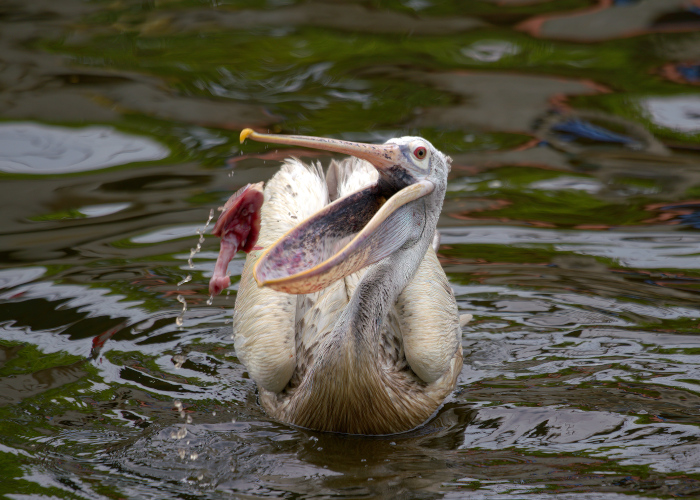
spot-billed Pelican (Thailand) © Bird Conservation Society of Thailand
The endowment’s capital has risen from $27.5m (initial allocation) to $29.5m at the end of 2022, while $19.8m have been distributed in grants over the same period[1], achieving all three of the endowment’s goals.
The Investment Policy of the Fund was revised in Q1-2023, three years after the previous revision. The desired investment objective is a long-term rate of return on assets of 4.5% net, measured in USD and using a total return approach (income as well as capital gains). By long-term, we mean beyond a full business cycle, therefore approximately 8-10 years. When defining the appropriate performance goal, the Board has taken into account a risk tolerance of a 15% loss over a one-year period. The risk measure used is an Expected Shortfall with a 95% confidence interval. Put simply, it means that if we envisage twenty possible scenarios, the worst one should not lead to more than an average 15% loss.
Since inception, the annualised net performance of the endowment has been +4.80% (MW), slightly above the current target. Over the last three years, it has been +5.03% (MW), above the current 4.5% target and slightly above the previous 5% one.
At the end of the year, the endowment was managed through discretionary mandates by Goldman Sachs and Banque Pictet, complemented by investments in PGIM, Blackstone and Aurum Millenium funds.
Since July 2015, Perennium SA is the independent financial advisor of the Fund. Perennium assists with establishing and reviewing investment policy, objectives and guidelines; defining strategic asset allocations; selecting investment options and managers; reviewing such options and managers over time; measuring and evaluating investment performance; and producing consolidated financial reports.
Additional distributions to the benefit of species conservation were made outside of the endowment (directly from donations), to the tune of $4.2m, bringing the total to $24m.
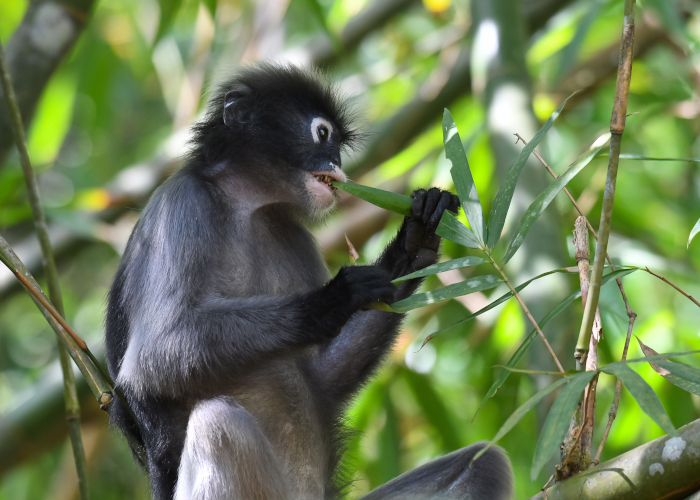
Trachypithecus Obscurus Eating Bamboo Leaves (Thailand) © WCS
Markets and performance in 2022
After a series of three excellent years for financial markets and for the portfolio (which registered double-digit performances), the year 2022 was exceptionally difficult. The biggest driver of this was much stronger-than-expected inflation, which hit multi-decade highs and led central banks to embark on their most aggressive tightening cycle in a generation. In the meantime, investors also had to grapple with geopolitical turmoil, since Russia’s invasion of Ukraine led to massive spikes in energy and food prices that particularly hit emerging market economies.
Financial markets fell across the board, and this included both equities (worst annual performance for the S&P500 index since the GFC in 2008) as well as bonds (worst annual performance for the Bloomberg US Treasury index since data begins in 1973). The exceptional pattern of 2022 was this conjunction of the fall in equities and in bonds, the worst in combined magnitude since 1928.
Against this backdrop, the MBZF portfolio proved very resilient (owing to the changes implemented since 2016), limiting its losses to -6.1%. By ways of comparison, the average balanced USD portfolio registered -14.4% in 2022. A three-year comparison is even more striking: from 2020 to 2022, the MBZF portfolio is at +5.0% annualized vs +0.3% for the average balanced USD portfolio.
The “traditional” portfolio (equities and fixed income) managed by Goldman Sachs delivered ‑12.9% while the part of the “alternative” portfolio (private equity, hedge funds and real estate) managed by Banque Pictet and the MBFZ directly delivered +1.2%.
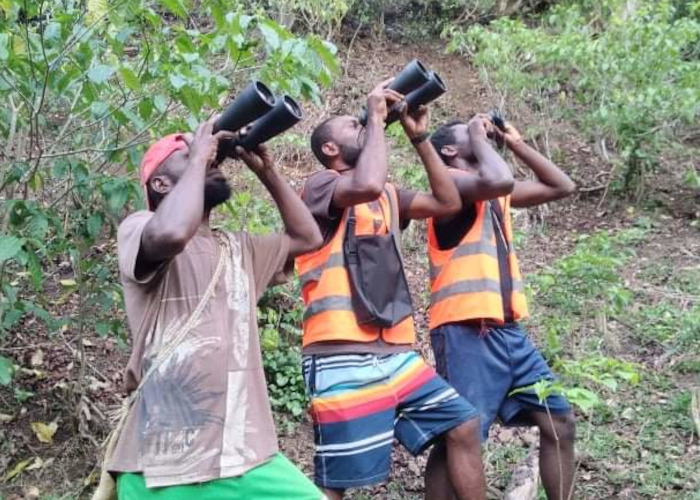
Bird Surveys © Allan Taman
The Future: 2022 and Beyond
The Investment Policy Statement has been revised during the course of 2022 and will be revised again with the usual three-year frequency.
We have experienced a historical change of regime, after 35-40 years of falling interest rates and tamed inflation (the “Great Moderation”). The massive fiscal stimulus and near‑zero interest rates seen during the pandemic have given way to tighter monetary policies and sharply higher bond yields.
While in 2023 the U.S. Federal Reserve and other major central banks have made progress against inflation and policy rates appear close to their peaks, rate cuts may not happen soon. Heading into 2024, inflation risks are skewed to the upside. Energy prices are a concern amid supply‑side pressures.
Monetary policy effects typically are felt with a lag, so global economic growth remains at risk. The eurozone already is in recession, and China’s post‑pandemic recovery has been disappointing. However, the U.S. economic outlook is more encouraging, as corporations and consumers both have proven less sensitive to higher rates compared with other major global economies. Fiscal stimulus has added further support.
We are not, however, changing our strategic asset allocation purely on the basis of market forecasts, and the investment philosophy of the Fund remains rooted in its three core tenets:
- The understanding that investing is about dealing with uncertainty. Trying to predict short-term market movements is a futile exercise. On the contrary, one must prepare for all eventualities.
- The focus on portfolio resilience, using components having the right level of true diversification (i.e., different behaviours). Portfolio construction is the key element of the investing value chain.
- The choice of a (very) long-term view. A long investment horizon also allows the use of a wider range of financial assets and a better connection with the real economy.
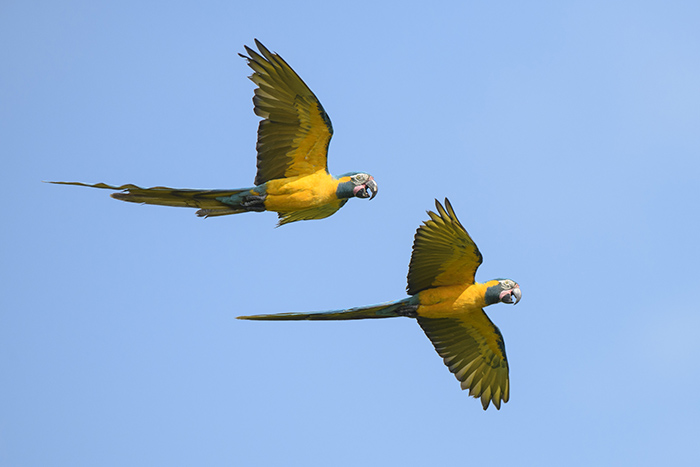
Financials
Distribution of funds
Distribution of proceeds
In 2022 the Fund distributed a total of $1.5 million which supported 179 projects selected from 1,438 grant applications. With restrictions lifted post the Covid pandemic, the Fund were able to support more applicants than in 2021. Another major achievement ensured that the Fund managed to extend their reach by covering an additional 94 species and sub species. The average fund size awarded was $8,913.92 compared to $9,056 from funds in 2021.
Distribution of funds by species type
Distribution of funds by continent
Distribution of Funds by IUCN Red List
The Mohamed bin Zayed Species Conservation Fund remains dedicated to fulfilling the vision of His Highness Sheikh Mohamed bin Zayed Al Nahyan to support species conservation efforts in all their forms across the globe. Inspired by this vision, and the dedication of the many conservationists, researchers and scientists working in the field to assess and protect our most vulnerable flora and fauna, the Fund is committed to preserving the extraordinary biodiversity of Earth for generations to come.
www.speciesconservation.org
Mailing address:
The Mohamed bin Zayed Species
Conservation Fund
P.O. Box 131112
Abu Dhabi
United Arab Emirates
